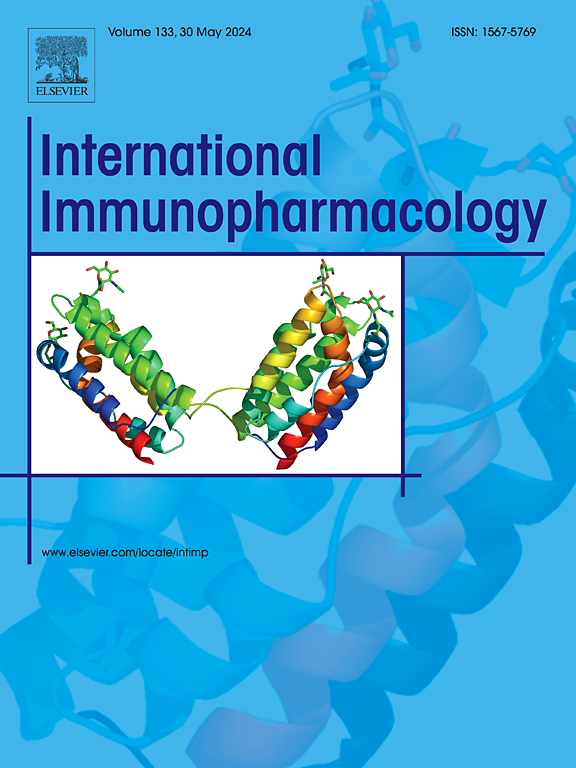PM2.5 regulates TGF-β1/Smads-mediated pulmonary fibrosis via ROS/SnoN in vitro and in vivo
IF 4.8
2区 医学
Q2 IMMUNOLOGY
引用次数: 0
Abstract
PM2.5 can result in a chronic lung disease, such as pulmonary fibrosis (PF), but the precise mechanism is unclear. In vivo, 40 male C57BL/6 mice were exposed to three concentrations of PM2.5 (0.5 mg/kg·Wt, 5 mg/kg·Wt and 8 mg/kg·Wt) and PM2.5 was administered by tracheal drip every three days for a total of 15 times. Then all mice were euthanized, blood and lung tissue were collected for testing of various indicators. In vitro, rat alveolar type II epithelial cells (RLE-6TN) were pretreated with different concentrations of PM2.5, ROS inhibitor (Vitamin C) and ubiquitin proteasome inhibitor (MG132) separately. Our results indicated that PM2.5 resulted in inflammation and oxidative stress, which in turn caused pathological damage and collagen deposition of lung tissue. In addition, exposure to PM2.5 increased TGF-β1 protein expression and Smad3 phosphorylation both in cells and in lung tissue, which involved collapse of antioxidant reduction system and degradation of SnoN. Additionally, in order to explored potential mechanisms, we used MG132 and VC pretreated cells and found that MG132 and VC pretreatment both inhibited ROS production, and increased SnoN protein expression levels. Further testing of EMT related indicators revealed that MG132 and VC pretreatment reversed the changes under PM2.5 exposure. Moreover, MG132 pretreatment reversed the increase of TGF-β1 protein expression and the Smad3 phosphorylation induced by PM2.5, but the effects were not as strong as those of VC pretreatment, which was related to the fact that VC inhibited both ROS production and SnoN degradation, which further clarifies the key role of ROS and SnoN in PM2.5-induced EMT. Therefore, this study conjectured that ROS/SnoN functioned as a key regulating factor in PM2.5-induced PF and EMT.
求助全文
约1分钟内获得全文
求助全文
来源期刊
CiteScore
8.40
自引率
3.60%
发文量
935
审稿时长
53 days
期刊介绍:
International Immunopharmacology is the primary vehicle for the publication of original research papers pertinent to the overlapping areas of immunology, pharmacology, cytokine biology, immunotherapy, immunopathology and immunotoxicology. Review articles that encompass these subjects are also welcome.
The subject material appropriate for submission includes:
• Clinical studies employing immunotherapy of any type including the use of: bacterial and chemical agents; thymic hormones, interferon, lymphokines, etc., in transplantation and diseases such as cancer, immunodeficiency, chronic infection and allergic, inflammatory or autoimmune disorders.
• Studies on the mechanisms of action of these agents for specific parameters of immune competence as well as the overall clinical state.
• Pre-clinical animal studies and in vitro studies on mechanisms of action with immunopotentiators, immunomodulators, immunoadjuvants and other pharmacological agents active on cells participating in immune or allergic responses.
• Pharmacological compounds, microbial products and toxicological agents that affect the lymphoid system, and their mechanisms of action.
• Agents that activate genes or modify transcription and translation within the immune response.
• Substances activated, generated, or released through immunologic or related pathways that are pharmacologically active.
• Production, function and regulation of cytokines and their receptors.
• Classical pharmacological studies on the effects of chemokines and bioactive factors released during immunological reactions.

 求助内容:
求助内容: 应助结果提醒方式:
应助结果提醒方式:


